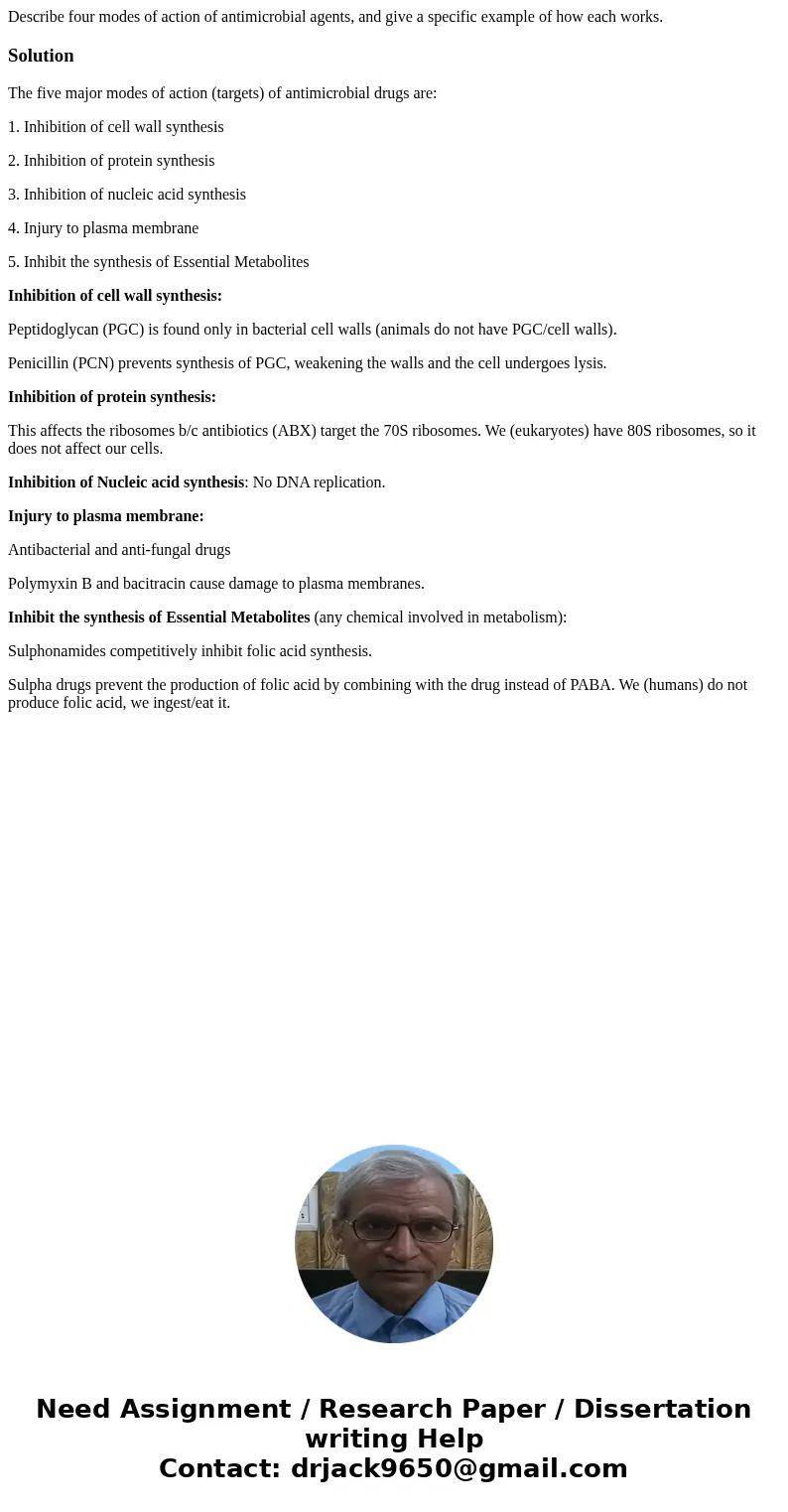Describe four modes of action of antimicrobial agents and gi
Describe four modes of action of antimicrobial agents, and give a specific example of how each works.
Solution
The five major modes of action (targets) of antimicrobial drugs are:
1. Inhibition of cell wall synthesis
2. Inhibition of protein synthesis
3. Inhibition of nucleic acid synthesis
4. Injury to plasma membrane
5. Inhibit the synthesis of Essential Metabolites
Inhibition of cell wall synthesis:
Peptidoglycan (PGC) is found only in bacterial cell walls (animals do not have PGC/cell walls).
Penicillin (PCN) prevents synthesis of PGC, weakening the walls and the cell undergoes lysis.
Inhibition of protein synthesis:
This affects the ribosomes b/c antibiotics (ABX) target the 70S ribosomes. We (eukaryotes) have 80S ribosomes, so it does not affect our cells.
Inhibition of Nucleic acid synthesis: No DNA replication.
Injury to plasma membrane:
Antibacterial and anti-fungal drugs
Polymyxin B and bacitracin cause damage to plasma membranes.
Inhibit the synthesis of Essential Metabolites (any chemical involved in metabolism):
Sulphonamides competitively inhibit folic acid synthesis.
Sulpha drugs prevent the production of folic acid by combining with the drug instead of PABA. We (humans) do not produce folic acid, we ingest/eat it.

 Homework Sourse
Homework Sourse